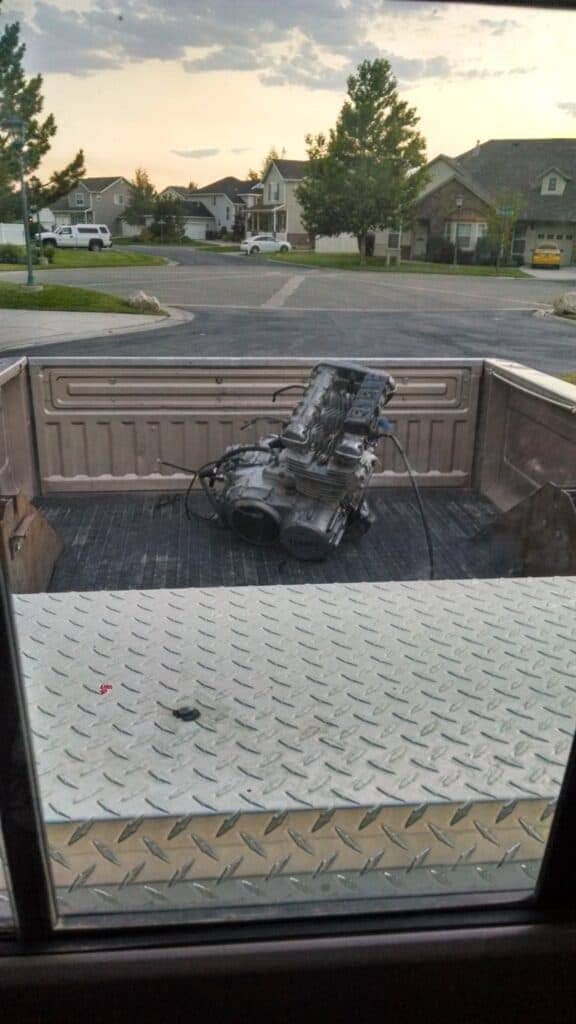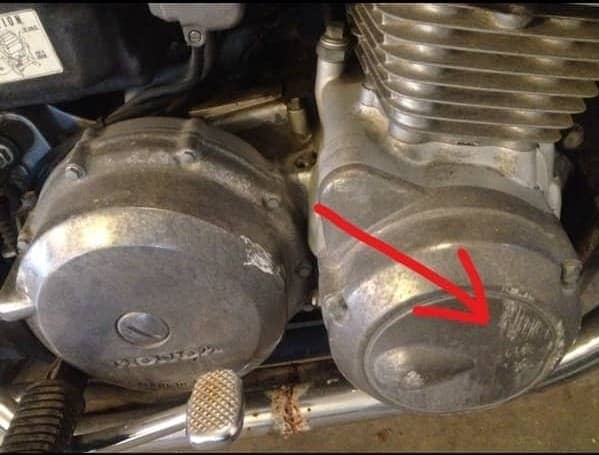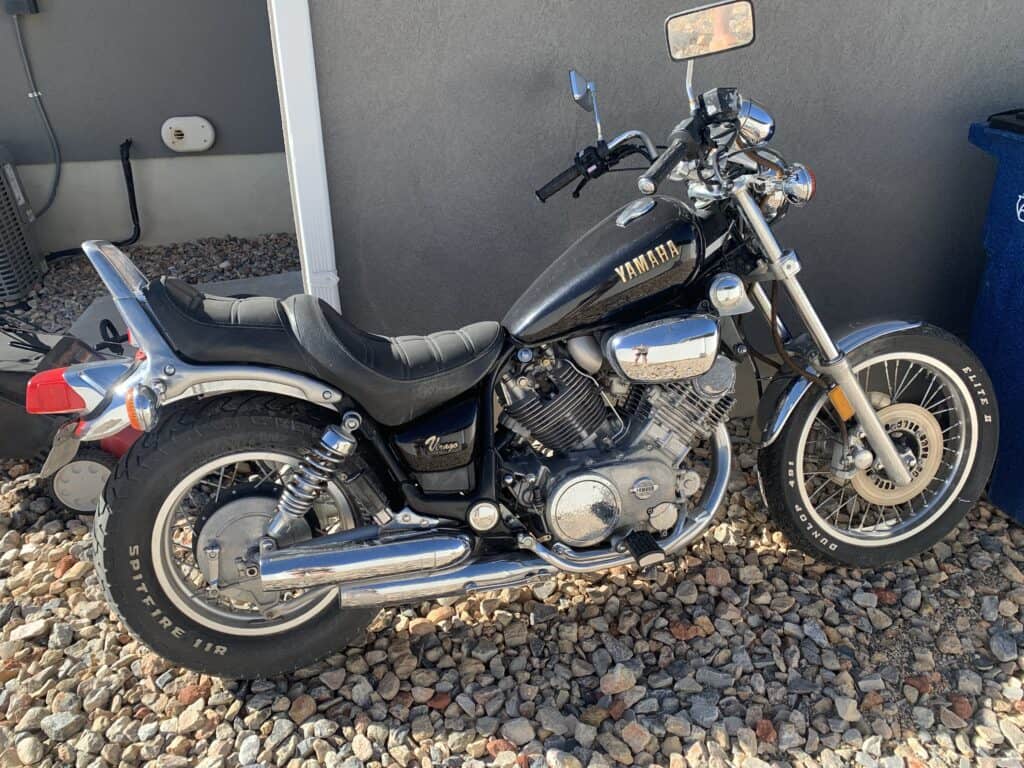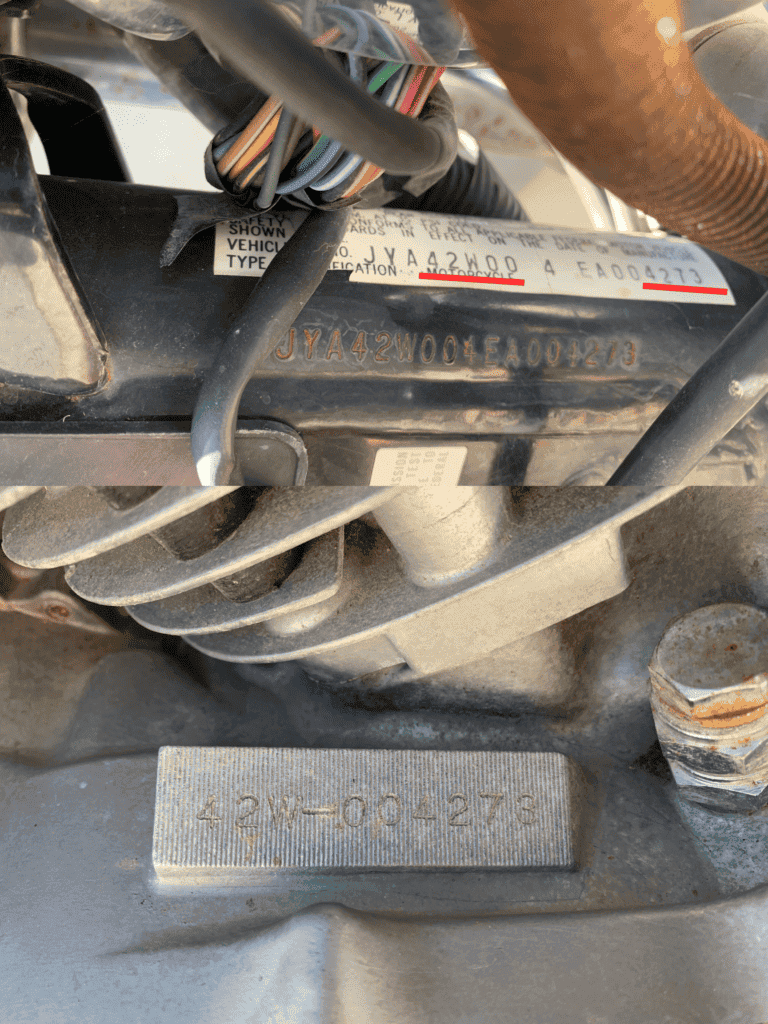
If you have damaged your motorcycles engine and are looking for a replacement, you may have considered purchasing a used engine. Is this risky? Buying a used motorcycle engine can be both risky and a bargain. It’s important that you are able to evaluate the used engine properly to determine whether it’s worth buying or not.
There are a lot of different reasons why you may want to buy a new motorcycle engine. Your options are either to repair the engine you have (if possible), buy a new engine, or buy a used engine. Additionally, you may be interested in buying a used engine if you want to have spare engine parts available for your motorcycle.
On top of buying the engine, you will also need to get it installed after purchasing it. This is something that you can do yourself if you feel comfortable enough doing it. Removing and replacing an engine can be a big task and requires a good amount of attention to detail.
I have had great luck buying used engines for my motorcycles. I’ve done it many times for my restorations and would highly recommend it. The following guide will walk you through some things you should always do and look for before buying a used motorcycle engine. I always do these when buying an engine and it has never lead me astray, our hope is that it’ll lead you in the right direction too!
Perform A Compression Test
Performing a compression test on a used motorcycle engine is imperative, especially if you plan on using it as a replacement for your current engine. This type of test will be able to truly tell you if it’s something you could use as a replacement that actually works.
There are a few ways you can do this and a lot of this depends on whether or not the engine is still installed on the original motorcycle. First, let’s discuss how to perform a compression test on a motorcycle engine that is still installed.
Remove all the spark plugs from the engine. Then you’ll take a compression tester (you can rent these for free from auto parts stores or buy them pretty cheap on Amazon) and install the compression tester in cylinder number one (the spark plug hole). Once it’s threaded in and tightened, you’ll crank the engine for a few rotations via the electric starter button.
Read the pressure on the pressure gauge on the compression tester; record what that compression reading says. Repeat this process for all cylinders and record each reading. It’s good practice to test each cylinder a few times. Once you have tested all the cylinders, look at all your readings and compare them. There should be no more than a 10% variation between the highest reading cylinder and the lowest reading cylinder.
If you do have a greater than 10% variation between readings, then you have a leaking valve, a worn piston, or a blown head gasket. I do not recommend buying a used motorcycle engine that potentially has these problems unless you’re just using it for spare parts.
Now let’s talk about doing a compression test on a motorcycle engine that has been removed from the motorcycle. You’ll need to hook a battery up to the starter of the motorcycle engine using jumper cables. The black wire will clip to the starter housing and the positive wire will clip to the positive starter solenoid terminal. Then use a wire to jump between both starter solenoid terminals. This will cause the engine to rotate by way of the starter.
Proceed to perform the same compression test we just mentioned. Again, I recommend doing several readings on each cylinder to ensure you don’t get a false reading.
Perform A Leakdown Test
Performing a leakdown test is also a telling procedure that can really indicate whether or not a used motorcycle engine is in good working order. A leakdown test provides information about which component within a cylinder is causing leakage. Once you perform a compression test and find poor readings on a specific cylinder, you can perform a leakdown test to see what is exactly causing those poor readings.
A leakdown test can be performed on a motorcycle engine regardless if it’s installed on a motorcycle or not. First, you’ll need to ensure the cylinder is in top dead center, meaning the piston is at the top of it’s stroke during the compression stroke, not the exhaust stroke. You’ll know it’s the top of the compression stroke if both the intake and exhaust valves are closed. If you’re still unsure of how to do this, you can look ahead of time before looking at the engine and read the manufacturer’s guides on how to do this on that specific engine.
Once you find top dead center, install the leakdown tester on cylinder number one and introduce air to the system. You can also find a leakdown tester to rent for free from most auto stores. Every engine will have some air loss with 5%-10% being the optimal condition. 10%-20% is okay, but you should be wary that something is worn and will likely need attention soon. Above 20% loss is unacceptable and indicates serious issues within that cylinder.
After introducing air to the system, listen to where the air or “hissing” is coming from; if it’s coming from your oil fill cap or dip stick tube, then the engine likely has worn piston rings. For motorcycles that are liquid cooled, if air is hissing out of the cooling system, then you have a head gasket crack or a cracked cylinder head.
If air is hissing from the tail pipe or exhaust manifold, then you have a leaking exhaust valve. If you have air coming from the carburetor or intake, then you have a leaking intake valve. If you notice any of these problems, you can gauge whether or not it’s worth it to you to buy this engine depending on your skills of fixing it and what you’re using it for.
Look For Scratches Along The Bottom Corners Of The Engine

It’s always a good idea to inspect for scratches on the outside of a potential motorcycle engine you may be buying. This is a way to gauge whether the engine has been in any sort of accident. Generally, these will appear on the bottom corners of the engine. If you notice any such damage, the engine may have been dropped or potentially been in an accident. You’ll want to get some more details from the seller about what happened.
Why are engine scratches a big deal? It can be a big deal for a couple of reasons. First off, accidents cause damage to far more than just the body and cosmetics of a motorcycle engine. Common internal motorcycle engine problems that happen after an accident are cracked or bent bearings, cracks in connecting rods, broken clutch springs, bent valves, or a number of other engine failures.
So, while a scrape on the engine doesn’t mean that you can’t buy a used engine, it is something to consider when shopping around. It is a good practice to get all of the details of the accident from the seller if you notice this. See our other article here to learn more about other signs to look for that indicate a motorcycle has been in an accident.
You can then take this information and use it to help you decide whether you want the engine. Remember that buying a used motorcycle engine is all about evaluating risk and ensuring to the best of your abilities that the risk is low.
Perform A VIN Inspection
Another important thing to do is to perform a VIN inspection to ensure that you aren’t buying an engine that someone has stolen. This is a fairly simple thing to do and will help you know if the seller you are buying from is honest and trustworthy for one, and also if the engine is legally for sale.
Motorcycles are common targets for theft because they are much easier to steal than a car. You can easily load up a motorcycle into a truck or on a trailer and get away with it. From there, many thieves will take major components from the motorcycle (like the engine) and sell them. They do this because it is much less risky than trying to sell the entire motorcycle.
Keep in mind that motorcycle engines usually do not have a VIN on them. They do, however, have engine numbers. Engine numbers and VINs aren’t the same, though a motorcycle VIN will have similar numbers to the engine number it came with. Here’s an example:
Here’s a 1984 Yamaha Virago I just bought to restore.

Below is a picture of the VIN (top) and the engine number (bottom). As you can see, the engine number and VIN are not the same, but the engine number is implemented throughout the VIN.

If possible, you can perform a VIN inspection on the motorcycle the engine came from. Inspect and compare the numbers between the engine number and the VIN to ensure it’s the correct engine that goes with that motorcycle. You may have to do some research on the specific motorcycle to see which numbers will coincide. If the VIN comes back clean, that likely means the engine is not stolen.
Ask For Videos Of The Engine Running Before It Was Pulled
One very simple thing to do that will tell you a lot about an engine is to ask for a video of the engine running on the motorcycle before it was pulled. Typically, when you go to buy an engine, it will already have been pulled from the motorcycle it was on and is just sitting in someone’s garage. Sometimes, the engine may still be installed so that you can start the motorcycle up and hear the engine.
As such, if the engine has been pulled, you have no way of starting the engine and listening to it run. The closest thing you can get is to see a video of it running before being pulled. This can give you a lot more confidence in the used engine.
It’s important that you listen in the video for any unusual sounds. Make sure that the engine sounds smooth and consistent. If the video you are watching is from a long time ago, you will have to take that into consideration as well. The engine could have sounded great then, but after more usage or after sitting for so long, it may not anymore. It’s up to you to weigh the risk and figure out if the engine is worth it or not.
Inspect Under The Valve Cover

Checking under the valve cover may seem a bit too thorough, but I assure you that if you’re planning on spending some good money on a used motorcycle engine, you’ll want to do this. It sounds intense, but it’s actually a pretty simple task to perform and can be done in the brief visit you have with the seller.
You’ll need to bring a set of tools with you such as deep dish sockets to remove the valve cover bolts. Remember that removing the valve cover does not mess with the timing and only a few oil drops should spill once it’s removed. And obviously, you’ll also want to make sure the seller is okay with you removing this. Also note that the removal of a valve cover will require new gaskets, so it may be a good idea to bring some new ones with you while you do this.
Once the valve cover is removed, your very first check should be any indication of metal shavings. If there are metal shavings, then slowly walk away and don’t ever come back. This is an indication of severe engine damage.
The second thing to look for would be cracked or bent springs and valves. This happens mostly because of cyclical fatigue (aka age and usage). The third thing I would look for is extreme sludge buildup. This indicates the previous owner not performing oil changes on a regular basis.
Pros Of Buying A Used Motorcycle Engine
So, what are the pros of buying a used motorcycle engine? The biggest pro is that you can save quite a bit of money buying used as compared to buying a new engine. A used engine can be a quarter of the price of a new one depending on the seller and how many miles are on the engine. If money is your biggest concern with getting a new engine, then considering buying used can be a great idea.
In addition to the price being lower, you can also usually haggle with someone over a used motorcycle engine. With a new motorcycle engine, the price is the price and that is what you will have to pay. When it comes to used, if you notice any sort of damage or wear on the engine, you can bring that to the seller and explain that for those reasons you are offering them less than they are asking. There’s no guarantee that they will accept your offer, but there’s a chance it can save you even more money.
The last major pro is that you can typically come home with the engine that same day (if a used engine is for sale near you). Once you have discussed the pricing and paid for it, you can load up the engine and take it home. That is much quicker than waiting for a new one to show up at the dealership or to wait for one ordered online to show up at your house.
Some Disadvantages To Buying Used Motorcycle Engines
There are also a couple of cons when it comes to buying a used motorcycle engine. First off, the engine has been used and already has some miles on it. That means that it’s likely not going to last as long as a new engine, although that may not matter to you.
Additionally, you can’t always tell how well the previous owner cared for the engine. If they drove the engine extremely hard and were bad about doing maintenance on it, you could be buying a worn-out engine.
The last thing to mention is that many mechanics will not install the engine for you if it’s not new. This is because they don’t want to be blamed if the used components break. So, if you were hoping to have a mechanic do the swap, unless you know someone who is fine doing you the favor, you will probably need to get a new engine.
